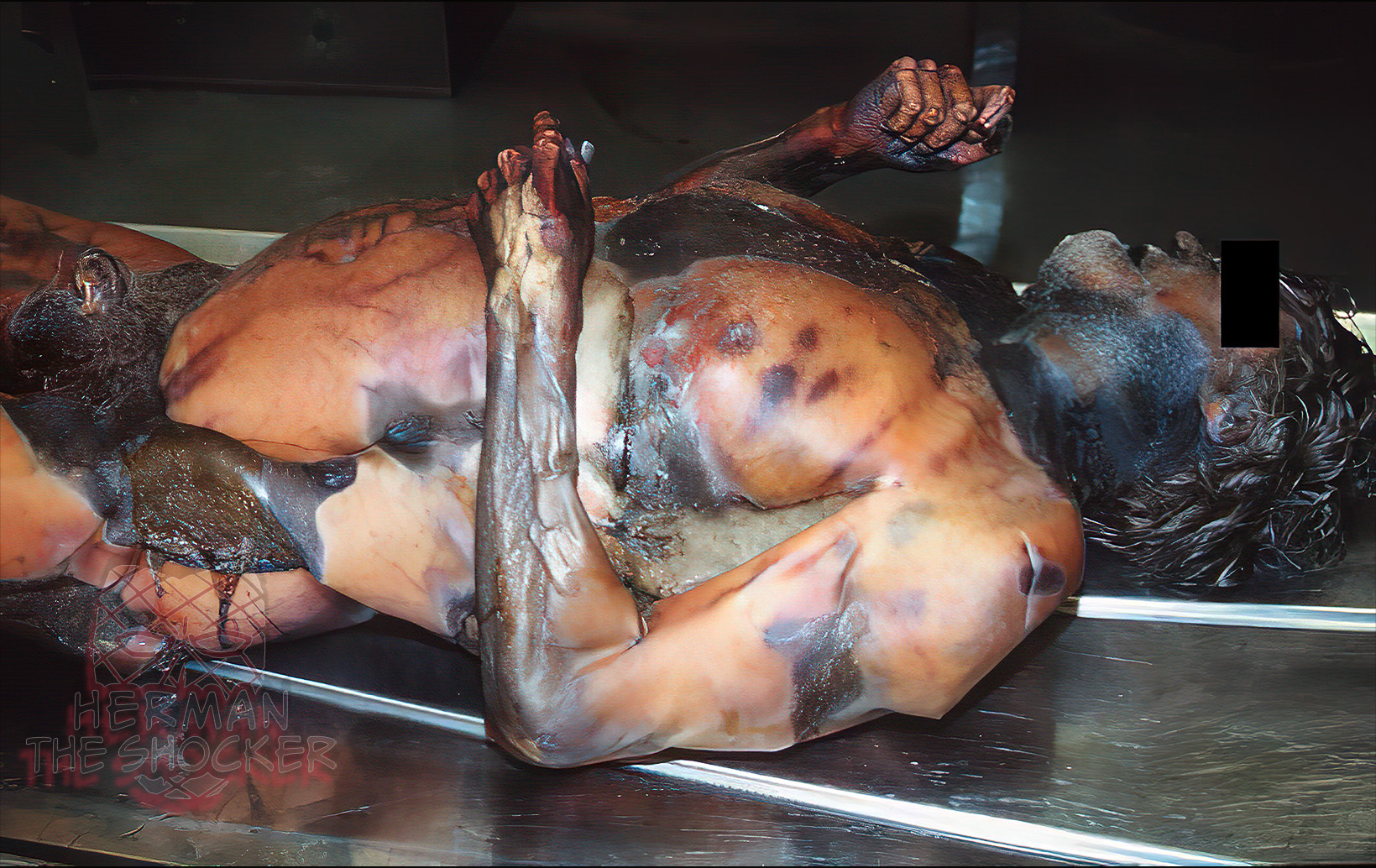This individual was found mummified in a locked room 10 weeks after death. The corpse is dry and leathery, with very little moist putrefaction. No further info. Mummification is drying of the tissues in place of liquefying putrefaction. Like the other modes of decomposition, this can be partial and can coexist with them in different areas of the same body. It is, however, more likely than the others to extend over the whole corpse.
Mummification can only occur in a dry environment, which is usually, but not exclusively, also a warm place. Mummification can occur in freezing conditions, partly because of the dryness of the air and partly because of the inhibition of bacterial growth. The most widely known forms of mummification are those in hot, desert zones. The process of artificial mummification practiced for millennia in Egypt was an imitative process founded on the natural mummification of bodies in predynastic times. The essential requirement for mummification is a dry environment, preferably with a moving air current. If sterility of the tissues can be attained, as in a newborn baby, then putrefaction is held at bay whilst drying occurs.
The appearances of mummification display desiccation and brittleness of the skin, which is stretched tightly across anatomical prominences such as the cheekbones, chin, costal margin and hips. The skin is discolored (usually being brown), though secondary colonization by moulds may add patches of white, green or black. The skin and underlying tissues are hard, making autopsy dissection difficult. The condition of the internal organs is variable, depending partly on the length of time since death. They may be partly dried, partly putrefied – and adipocere is not uncommon. In fact, slight adipocere formation is common in mummification, and perhaps the two are related in that the utilization of body water to hydrolyse fat in turn helps to dehydrate the tissues. The major factor, however, is evaporation from the surface in dry conditions.
Latest posts








